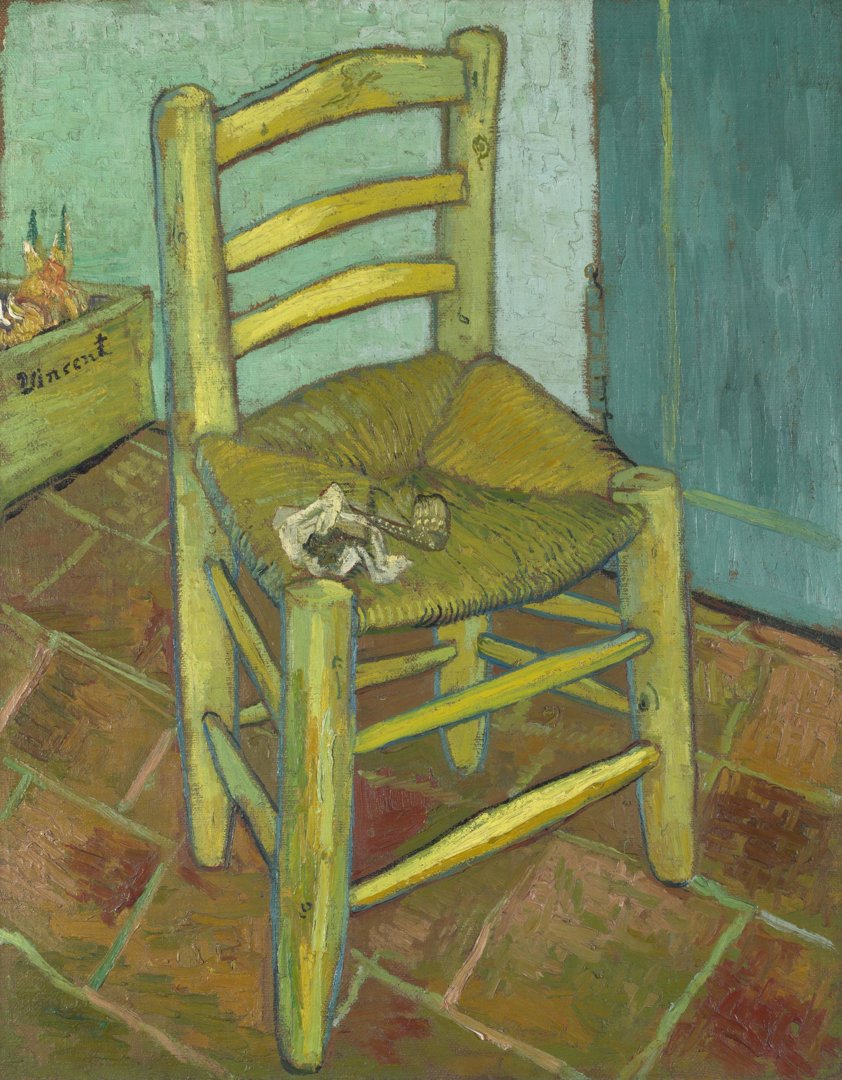Vincent van Gogh's 'Van Gogh's Chair'
Audio description
This is a description of 'Van Gogh’s Chair' painted by Vincent van Gogh. It is in oils, almost one metre high and 73 cm wide, with a broad, oak frame.
On completing the painting in November 1888, Van Gogh described it in a letter to his brother Theo simply as: “a wooden and straw chair all yellow on red tiles against a wall”.
The picture shows a single empty chair, set at a 45-degree turn to our right. The chair is in different shades of bright yellows. Its design is simple and rustic, robust with chunky legs. It has no arms, three horizontal slats at the back and a seat of straw, woven in sections towards its centre. Painted as if we are looking down on it, it almost fills the height of the composition.
The colours are vibrant and bold. Behind the chair, a wall of pale aqua blue meets the floor in a diagonal line, from the left, down to the right. Here, a darker turquoise blue suggests the lower corner of a door. The warm yellow hues of the chair are in striking contrast with the cool wall, and the tiled floor of terracotta tiles, reddish browns of chocolate and rust colours, with some pink.
Thick oil paint has been applied with a loaded brush, leaving raised paint on the surface. A criss-cross pattern of interwoven brushstrokes gives texture to the wall and floor. Broad brushstrokes of the lightest lemon-yellow follow the length of chair legs, and the struts in between.
The entire chair is outlined by a single line of cornflower blue. More pale lines on the floor, divide the staggered rectangles of the large floor tiles. These run in unexpected directions which disrupts the sense of space within the painting.
Reminding us of the artist who would ordinarily sit here, an abandoned tobacco pipe is on the seat, next to the jagged shape of a crumpled tobacco pouch. There is a profound sense of presence suggested by this lone, empty chair. Or an absence.
Behind the chair, to the left, is part of an open wooden crate on the floor – cut off by the edge of the painting. Here the artist has signed his name: simply, ‘Vincent’. Inside the box are what appears to be sprouting onions.
Van Gogh painted another picture of a chair at the same time as this one, designed to hang alongside it. It is now in the Van Gogh Museum in Amsterdam. In contrast, the second chair is in a dark room at night-time, lit by a candle on a stack of books. For Van Gogh, it represented his friend and fellow artist, Paul Gauguin and the differences in the two men’s approaches to art and life.
In this painting, this everyday object is a representation of Van Gogh’s personality and the qualities he valued: simplicity, and directness. A humble chair, in a shadowless room, its colours enlivened by the clarity of natural daylight.
It is the painting’s ability to express the character of its maker, which has led to it becoming one of Van Gogh’s best-loved paintings.


